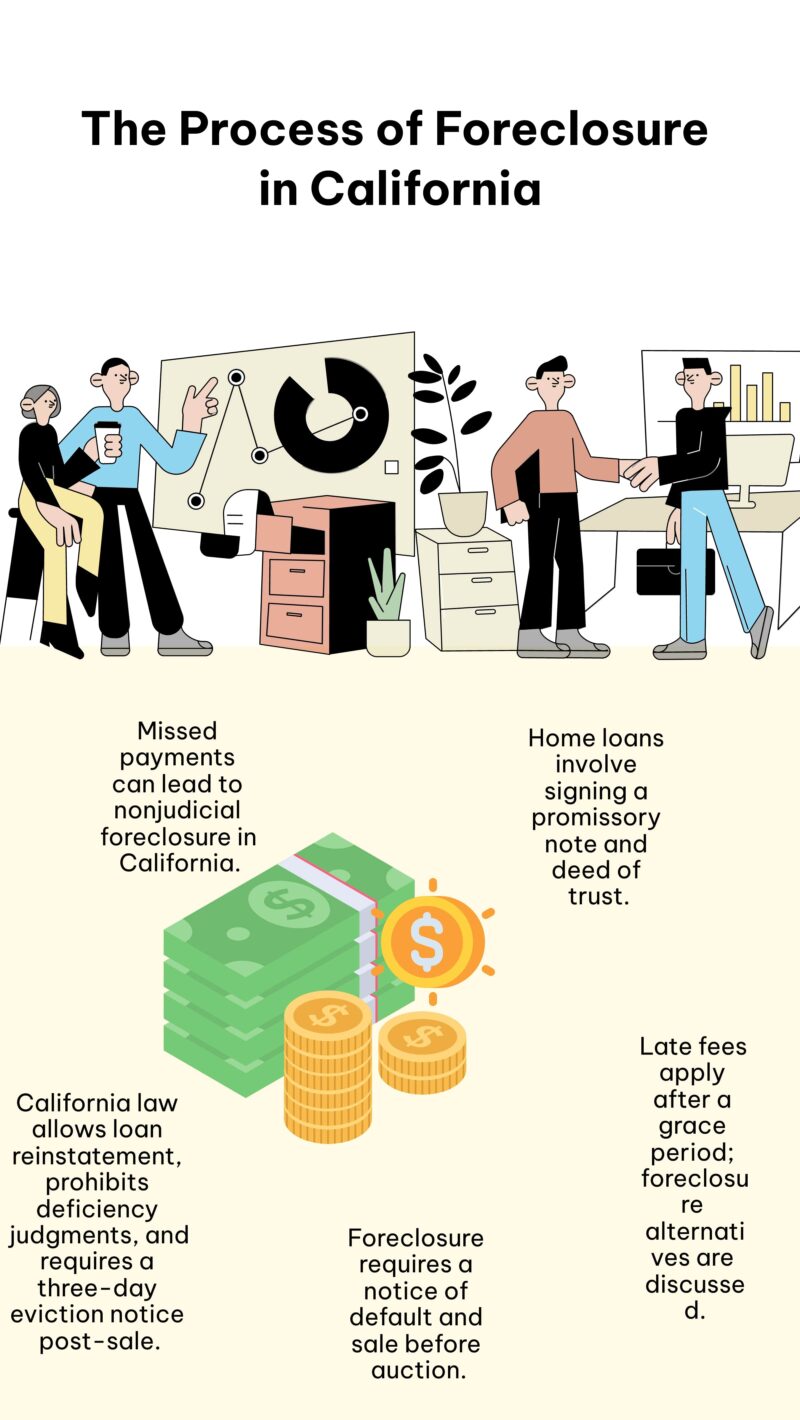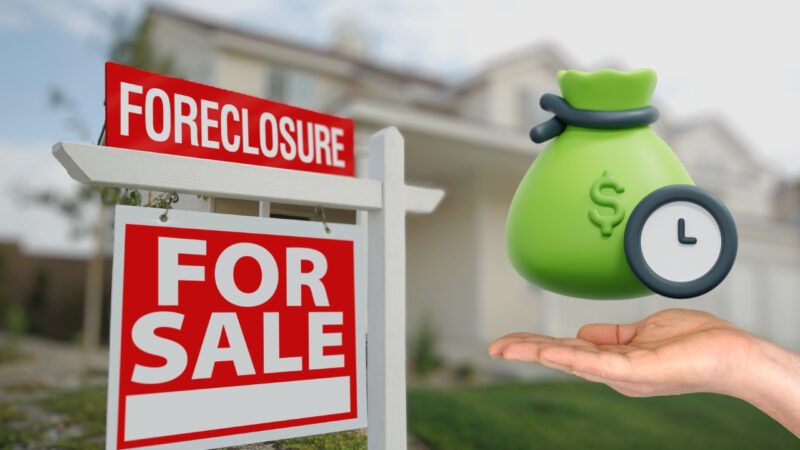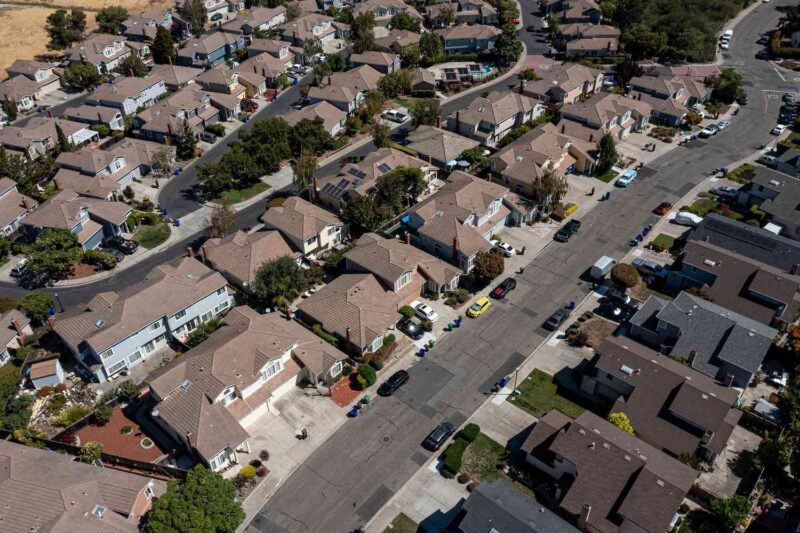In California, if you miss your home loan payments, the servicer, acting for the loan owner, will start the foreclosure process.
This usually happens outside of court (nonjudicial), but sometimes it can go through the court system (judicial).
The state’s laws outline the foreclosure process, and both federal and state regulations offer you certain rights and protections during this time.

Home Loans in California
When you take out a loan to purchase a house in California, you usually sign two key documents.
The first is the promissory note, which is your formal commitment to pay back the loan under the agreed terms.
The second is the deed of trust, similar to a mortgage, which gives your lender a legal interest in your property and often contains a power of sale clause.
This clause allows the lender to sell your home without going to court if you don’t keep up with the payments, as a way to recover the loaned amount.
What to Expect After Missing a Mortgage Payment

If you miss a mortgage payment, expect the servicer to potentially charge you a late fee once the grace period, typically ten to fifteen days, has ended. To understand the specifics of your grace period and late fees, you should look at your promissory note or your monthly statement.
Should you fall behind on multiple payments, the servicer will likely reach out to you with letters and phone calls to try and collect the payments.
According to federal laws, the servicer is required to contact you—or make attempts to contact you—by phone to discuss ways to avoid foreclosure, known as “loss mitigation” options, no later than 36 days after you miss a payment and again within 36 days after any subsequent missed payments.
Within 45 days of a missed payment, the servicer must inform you in writing about any potential loss mitigation options available to you and assign someone to assist you. There are a few exceptions to these rules, such as if you’ve declared bankruptcy or if you’ve asked the servicer not to contact you under the Fair Debt Collection Practices Act.
Breach Letter
A breach letter is a notice that lenders in California must send if you’re late on your mortgage payments, as stated in many deeds of trust.
This letter informs you that your loan is in default.
It means if you don’t resolve the missed payments, the lender has the right to demand the full loan amount immediately and proceed with foreclosure.
Starting Foreclosure: What You Need to Know

Under federal regulations, your loan servicer must typically wait until you’re more than 120 days behind on payments before beginning the foreclosure process.
There are exceptions, though. For example, foreclosure might start earlier if you breach a due-on-sale clause or if your servicer needs to join another lienholder’s foreclosure action.
Foreclosure Processes in California
In California, the foreclosure process is primarily nonjudicial, which means it doesn’t go through the court system.
Lenders opt for the judicial route, involving the courts, mainly when there are issues needing resolution regarding the property’s title or if they intend to pursue a deficiency judgment.
California’s Pre-Foreclosure Contact Law

Before starting the foreclosure process by recording a notice of default, California law requires the lender or servicer to either make direct contact with you or attempt to do so, at least 30 days beforehand.
This step is crucial for discussing your financial situation and exploring alternatives to foreclosure, such as modifying the loan.
According to California Civil Code § 2923.5, during this initial contact, you’ll be informed of your right to request a follow-up meeting, which must be arranged within 14 days if you choose to have one. This early discussion allows the servicer to evaluate your financial condition and consider different ways to avoid foreclosure.
You’ll be provided with a toll-free number to contact the U.S. Department of Housing and Urban Development (HUD) for access to HUD-certified housing counseling services.
The Homeowner Bill of Rights generally applies to first-lien mortgages on owner-occupied homes that have no more than four units, and the protections above generally apply if your servicer foreclosed on more than 175 homes in the last year according to State of California.
Foreclosure Notifications
In California, the foreclosure process involves two main notices: the notice of default and the notice of sale.
Notice of Default
The process begins when the lender or trustee files a notice of default with the county recorder’s office.
After this filing, they must mail you a copy within ten business days. You then have a three-month period to catch up on the missed payments and reinstate the loan.
Sale Announcement

After the initial three-month waiting period following the notice of default, the foreclosure process progresses with the issuance of the notice of sale. Here’s how it unfolds:
- Recording and Mailing: The lender or trustee records the notice of sale and mails you a copy at least 20 days before the scheduled sale date. Though this notice may be recorded up to five days before the three-month mark, the sale itself cannot be held until at least three months and 20 days after recording the notice of default.
Notice Posting and Publication
- On the Property: The notice must be posted in a visible spot, typically the front door.
- In a Public Place: Another posting is required in a location accessible to the public.
- In a Newspaper: It must also be published in a newspaper at least 20 days before the sale, ensuring public awareness.
Foreclosure Sale Timing
- Sales are conducted on business days, specifically Monday through Friday, between the hours of 9 a.m. and 5 p.m., aligning with standard business operations.
Auction
In California, the foreclosure culminates in a public auction where anyone can bid. At this auction, the lender often places a bid on the property using what’s known as a “credit bid.” This means the lender can bid up to the total debt owed by the borrower without actually paying cash.
The lender might bid the full debt amount or opt for a lower bid. The highest bidder at the auction wins and becomes the property’s new owner.
Reinstating a Loan Before Foreclosure Sale in California

In California, if you fall behind on your mortgage payments, you have the option to “reinstate” your loan.
This means you can pay off all the overdue amounts, along with any fees and costs, to bring your loan up to date and prevent foreclosure.
You’re allowed to do this at any point up until five business days before the property is scheduled to be sold at foreclosure.
Deficiency Judgments
After a foreclosure sale, if the property sells for less than what you owe on the mortgage, the remaining amount is known as a “deficiency balance.”
In some places, lenders can sue borrowers for this difference with a “deficiency judgment.”
California laws protect borrowers following a nonjudicial foreclosure by prohibiting lenders from obtaining a deficiency judgment against them.
This means if your home is sold for less than the amount you owe in a nonjudicial foreclosure, you won’t be liable for the difference in California.
Eviction Following a Nonjudicial Foreclosure

After a nonjudicial foreclosure sale in California, if you remain in the property, the new owner, which is often the lender, must provide you with a three-day notice to vacate the premises.
This notice period does not count weekends or judicial holidays.
If you do not leave within this timeframe, the new owner can then initiate formal eviction proceedings through the court.
It’s generally advisable to vacate the property before reaching this stage to avoid legal eviction action.
I’m Tanner Murphy, a retired real estate agent from California, now writing for propertyescape.net. I simplify California’s complex real estate laws for readers, making it easier to understand and navigate the market.
Related Posts:
- What to Expect During the Escrow Process? Sellers…
- How Much Tax Do You Pay When You Sell Your House in…
- Inheritance Tax on House - How Much Will I Pay in…
- How to Buy a House in California: All You Should Know
- My Guide to Investing in Vacation Properties in…
- California Will Give Homebuyers $150,000 to Buy Houses







